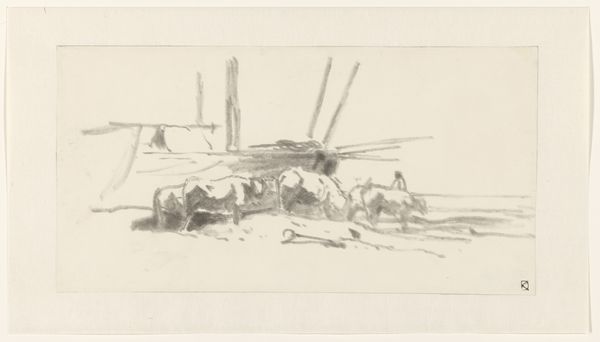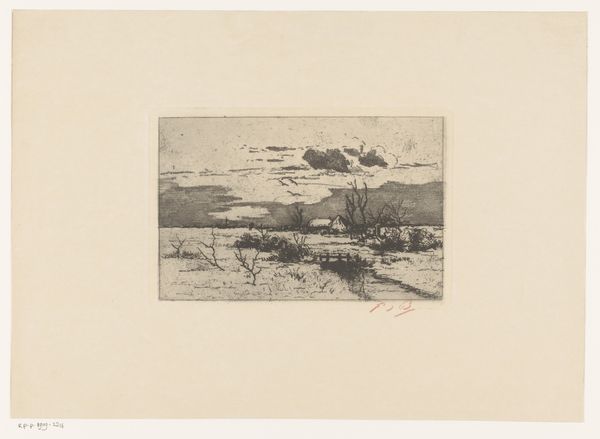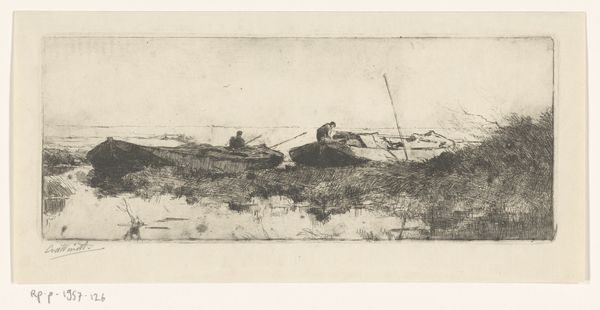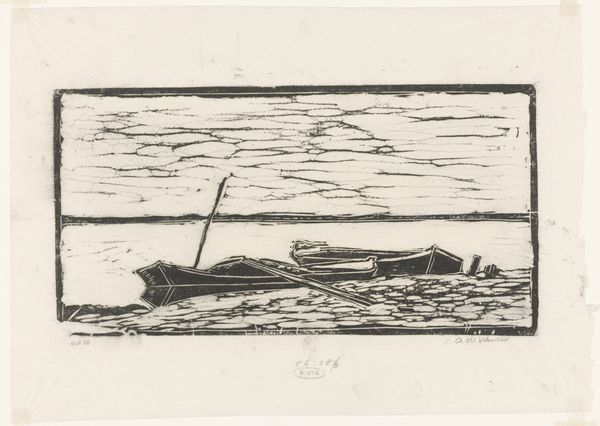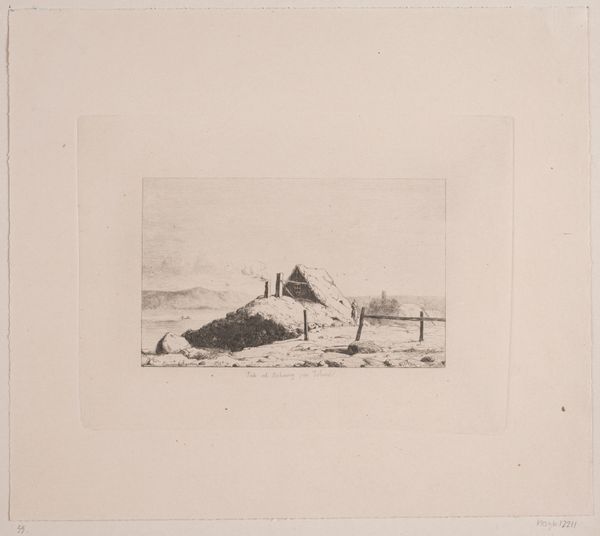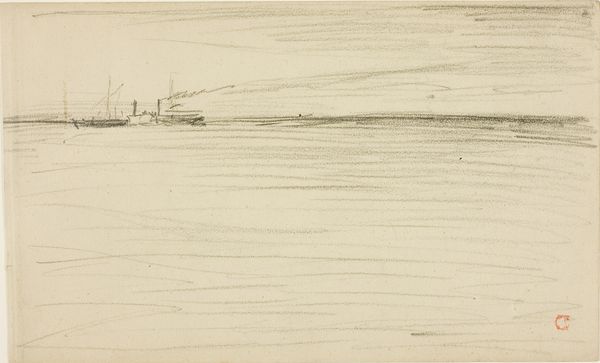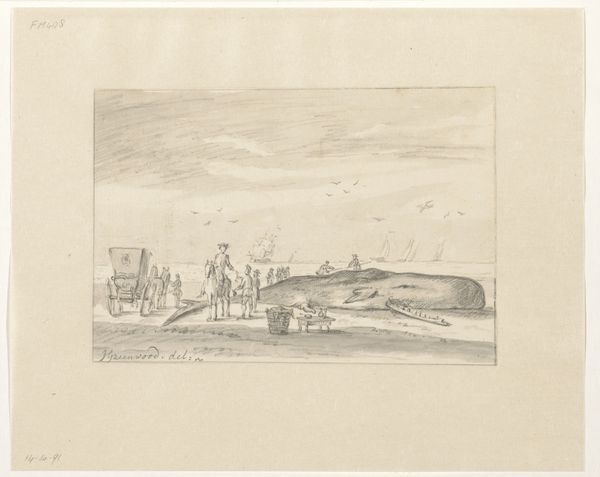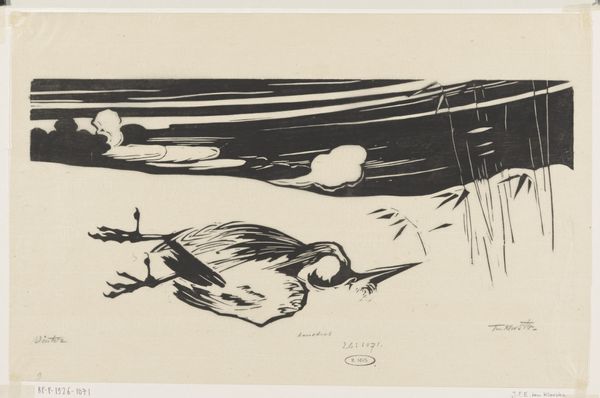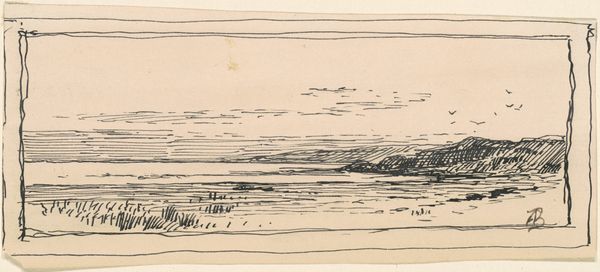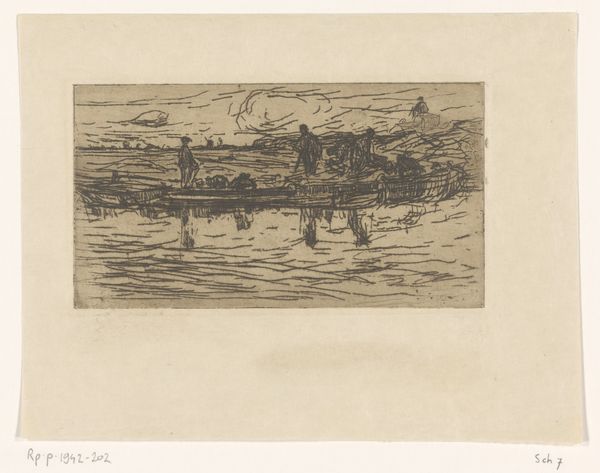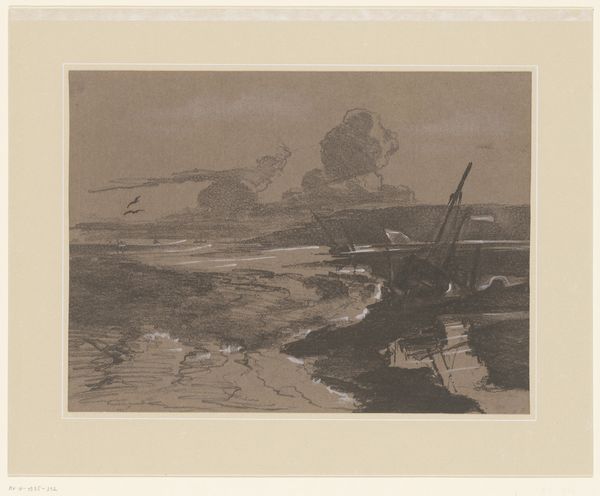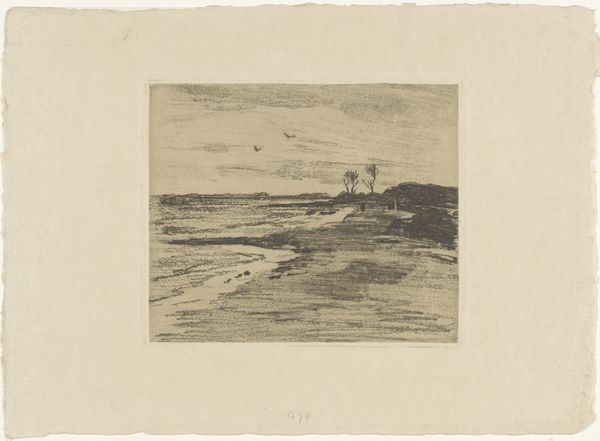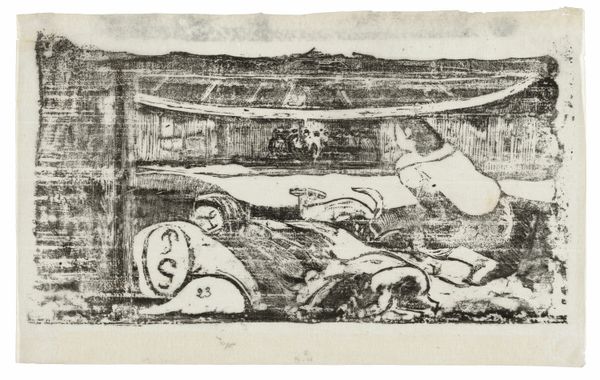
print, woodcut
# print
#
landscape
#
woodcut
#
monochrome
Dimensions: height 164 mm, width 269 mm, height 120 mm, width 229 mm
Copyright: Rijks Museum: Open Domain
Curator: Before us, we have "Sneeuwgezicht," or "Snow Scene," a woodcut print by Henri-Charles Guérard, dating from around 1856 to 1897. Editor: It's stark. The high contrast creates a heavy, almost oppressive atmosphere, even with the simplicity of the landscape. The monochrome palette feels appropriate for a winter scene, a quiet moment captured. Curator: Guérard, heavily influenced by Japanese printmaking techniques, offers us an exercise in minimalism here. I see a dialogue around absence and presence within 19th-century industrial anxieties, a time rife with changing societal perspectives on landscape, alienation, and belonging. Note how the large object appears to dominate the entire composition. Its purpose is not revealed. It might well represent capitalist structures bearing down on the landscape. Editor: Indeed, the bold lines defining the object create a sense of formidability. The rough texture, evidence of the woodcut process, contributes to the overall starkness. Observe the use of negative space, the vast expanse of white implying a deep covering of snow. Guérard clearly uses value to construct space, emphasizing the horizontal to establish the relationship of form in landscape. Curator: Also, consider the role of travel and transportation at the time, where new possibilities of crossing physical and mental spaces were accompanied by societal and industrial displacements. These smaller vertical architectural units appear on the horizon of the composition like ghostly and melancholic remnants. Are these places we've left, places that will soon change, or just a reminder that no space is truly unburdened? Editor: The composition pulls you in. The interplay of light and dark invites a viewer to construct their narrative for the print. It's an interplay of visual weight and symbolic weight. I particularly enjoy the slightly off-center framing of the form. It prevents the image from feeling too static. Curator: Yes, its simplicity is its strength. Considering Guérard’s wider social circles in France at the time, we must understand how printmakers worked to push and resist conventional methods of representation. Editor: It is precisely through such careful visual analysis that the print maintains a resonating presence today. The strength in simple lines generates great complexity of reading. Curator: Absolutely, its complexities reach beyond what appears on the surface, reminding us that we have to question everything about place. Editor: Well, I’ll have to continue to appreciate the delicate power of black and white in rendering spatial relations.
Comments
No comments
Be the first to comment and join the conversation on the ultimate creative platform.
